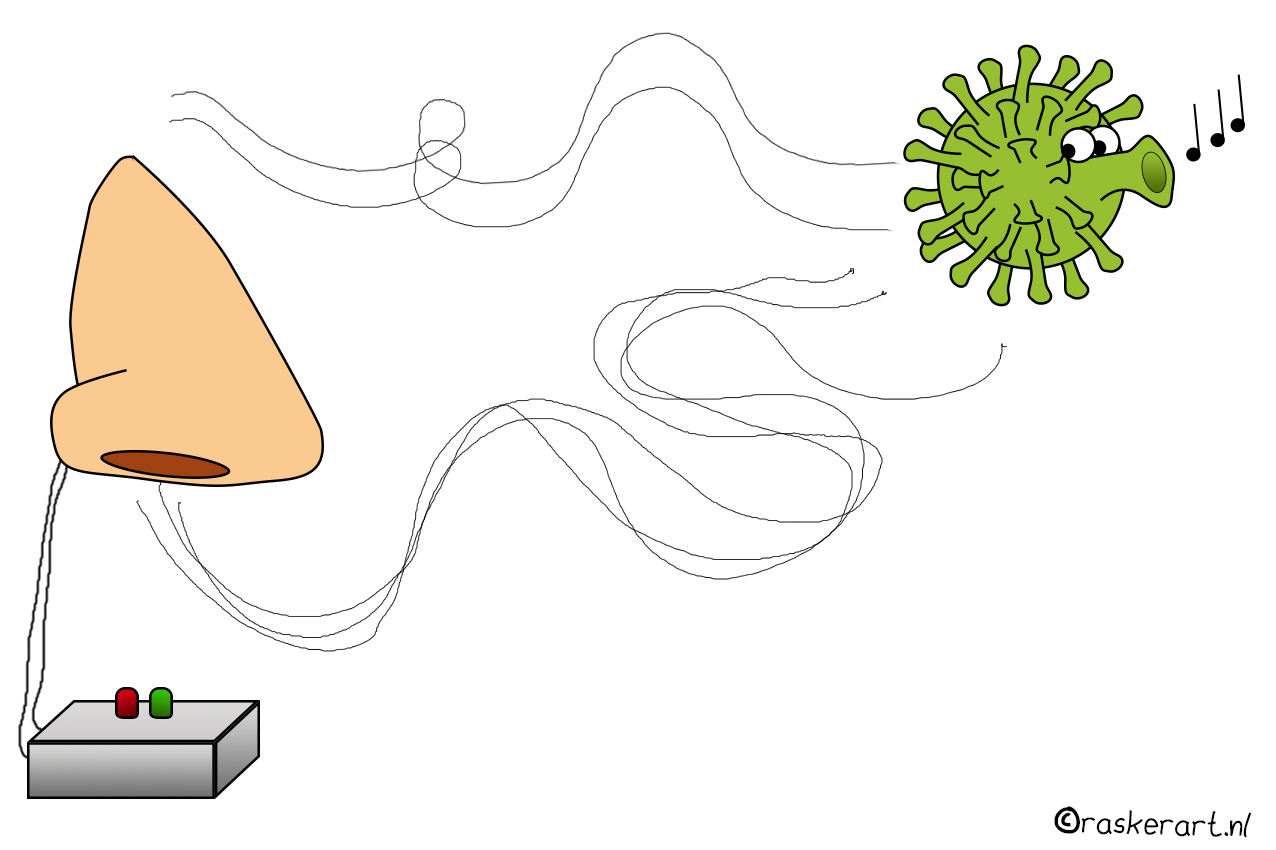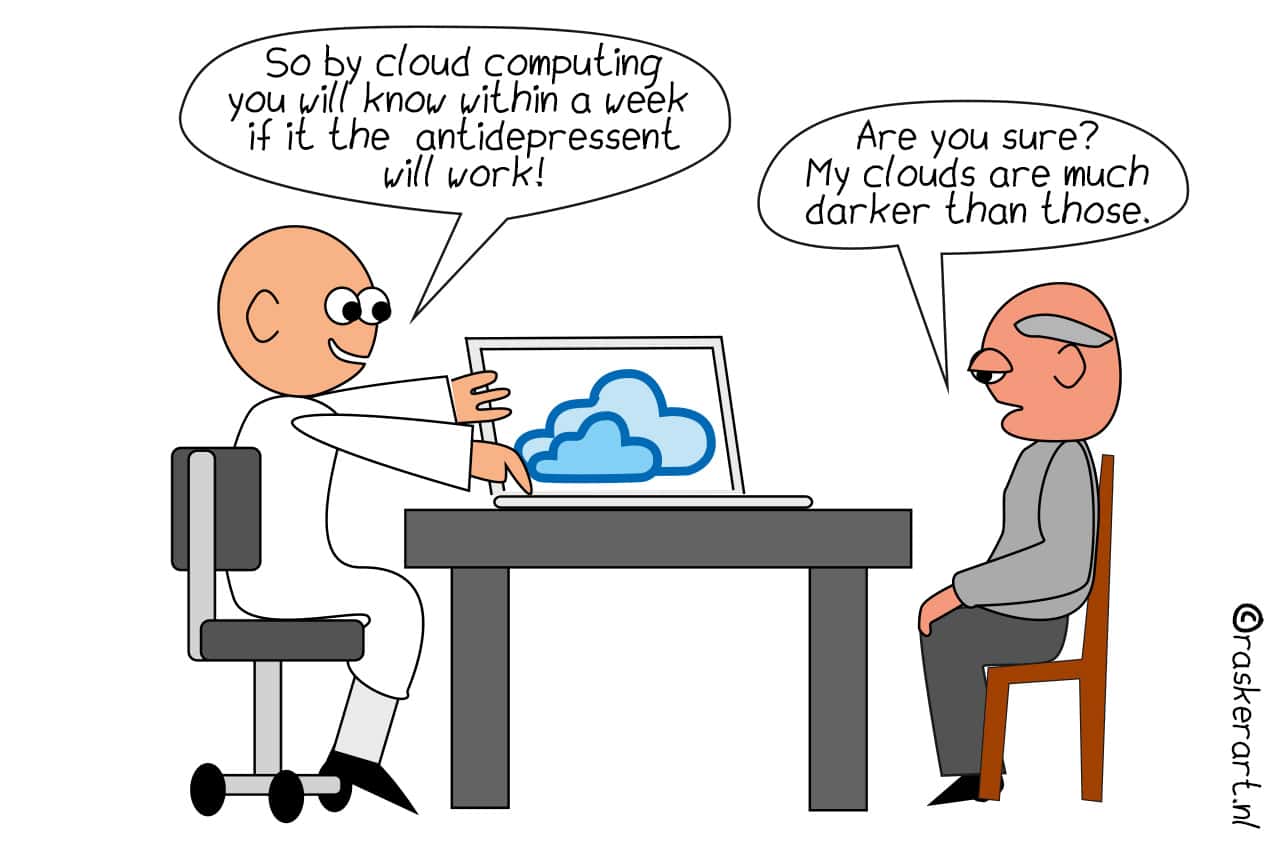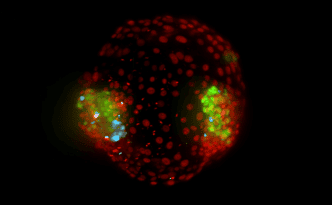
You notice especially once you can no longer smell something just how important your nose and sense of smell are. When you cannot seem to taste anything anymore because your sense of smell and taste are connected. COVID-19 may affect our sense of smell, but this sense can probably also detect an infection as well.
Dogs
Which is why Finns use dogs at Helsinki airport to detect corona infections. Those dogs are trained to smell very quickly if someone is infected with COVID-19. Research from Germany, the US and France also show similar results.
Using dogs to identify diseases is not new. Diseases have a different smell. A virus, bacteria or tumor affects the immune system. Dogs recognize this reaction, says Professor of Pathophysiology Peter Sterk of the University of Amsterdam ( the Netherlands).
Electronic nose
“Dogs are naturally a great example, albeit not at all practical,” Sterk continues. They are not very hygienic, training dogs takes time and a lot of dogs are needed as well; as hundreds of thousands of tests are performed every day. Sterk goes on to mention the E-nose, an electronic nose, as an alternative to the PCR test.
An E-nose works with non-specific, cross-sensitive sensors for volatile organic compounds (VOCs) that we exhale, Sterk explains. “The nice thing about this is that our own nose works the same way.” These exhaled substances are mostly hydrocarbons and other metabolic products from the lungs themselves or from the blood that passes through the lungs. The combination of these substances is different when someone is healthy or has a disease. “With COVID-19, the virus stimulates the immune system in a certain way, hopefully resulting in the exhalation of a recognizable profile of VOCs. An algorithm can recognize that profile. Each mixture has its own fingerprint, or breathprint, as we like to call it.”
Diagnostics
An E-nose cannot recognize which individual substances are in each breath, says Sterk. “Although it can recognize the complex mixture. And that’s what you need for diagnostics. An E-nose that is linked to cloud computing can then indicate within a minute whether a breathprint fits a certain medical condition or a healthy constitution. This is how the smart nose is trained with the help of the self-learning algorithm.”
That smart nose can potentially be used in the pre-selection of people who are suspected of having COVID-19. A form of triage, as Sterk describes it. “We can exclude genuinely healthy people from further screening for diseases who no longer need any more diagnostics.” A study is being conducted by the Amsterdam Municipal Health Service, (GGD), Franciscus Gasthuis & Vlietland Hospital (Rotterdam), and the Leiden University Medical Center (LUMC), all in the Netherlands.
The LUMC reported last month that the E-nose will soon be used by the GGD to rule out Covid-19. The E-nose, also dubbed the SpiroNose, has been developed by the company Breathomix. It was already used before the corona pandemic to detect lung disease. As cited in LUMC’s press release:”Over the past few months, we have successfully examined how the E-nose can also be used to detect the coronavirus,” says Geert Groeneveld, internist-infectious disease specialist at the LUMC’s Department of Internal Medicine.
Initial results
More than 1800 patients in the test lanes of the Amsterdam GGD were examined with the E-nose. It was established immediately that there was no corona infection in about three-quarters of the people tested. Approximately a quarter of the test subjects had to undergo an additional test to rule out COVID-19. This test is currently being repeated at another location in order to replicate the results, Sterk adds.
The Dutch Ministry of Health, Welfare and Sport (VWS) has now ordered hundreds of devices which are first to be used in the GGD’s test lanes. Although the test does not offer certainty in all cases, the SpiroNose as a screening instrument is expected to save valuable time. That is because those people who are not infected will not need to undergo a PCR test.
Other diseases
Worldwide there is more research being done into the detection of diseases by means of a respiratory analysis. This now happens for example in lung diseases such as COPD and in lung cancer, bowel cancer, throat cancer, and prostate cancer, but also in chronic intestinal diseases such as Crohn’s disease or ulcerative colitis. For instance, the Martini Hospital in the Ditch city of Groningen is participating in a national study for the detection of lung cancer with the E-nose. And the Maastricht UMC+ (in the south of the Netherlands) is looking into whether olfactory technology can also detect thyroid cancer
Malnutrition
The E-nose senses not only the smell of breath but also the smell of stools. This week, the Amsterdam University Medical Center (UMC) announced that the E-nose can predict the survival chances of severely malnourished children. This is demonstrated in the research of pediatricians Tim de Meij and Wieger Voskuijl. De Meij rebuilt the E-nose in 2017 so that stools could be tested. Voskuijl conducts long-term research in Malawi into malnutrition in children. The results of their study show that the smell of stools in children with a poor prognosis (and therefore a high risk of mortality) is picked up early by the E-nose.
Not new
The E-nose is fairly new to the medical world and is not yet widely used. But E-noses have been used for some time in the security sector. For example, in order to detect explosives, drugs or chemical weapons. The food industry also uses it to determine whether food is spoiled or contaminated. And NASA uses E-noses to trace ammonia leaks on space stations.
Wait and see
Exactly when the E-nose will be able to detect Covid-19 is as yet still unclear. In an opinion piece in the Dutch newspaper de Volkskrant, Daniël Korevaar, Lieuwe Bos and Guus Westerhof, all pulmonary physicians in training at the Amsterdam UMC, warn against using the test prematurely. According to them, the added value of the test is not yet sufficiently scientifically substantiated. Pathophysiologist Sterk is involved on the sidelines of this research. “The results have not yet been released, so it is difficult for others to assess the findings at this stage. There has been some early publicity about this, also in de Volkskrant. But the corroborative part of the research is still ongoing. We will have to wait for that before we can apply the E-nose with a sufficient degree of reliability and accuracy. Something that I am expecting to see.”
Innovation Origins described in a previous follow-up article that corona is putting the demands of scientific research to the test. That story was about scientific fraud, which is not the issue here in this case. Nevertheless, it does concern public health. Research and science journalist Frank van Kolfschooten said about this: “What you now see happening all the time is that procedures that normally (…) are supposed to safeguard the quality of science are accelerated or even omitted.”
According to Sterk, it pays to wait for the corroborative evidence from the research. In his own words: “That won’t take long and then it might become very interesting”.








